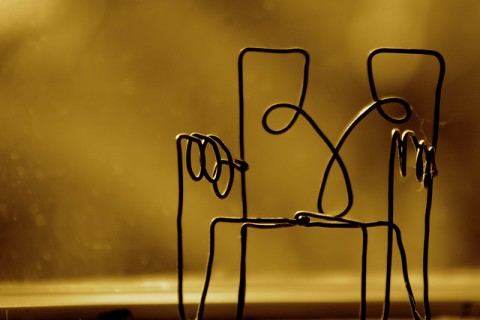The Power of What Isn’t
August 26, 2010 Leave a comment
“The Uses of Not”
Thirty spokes
meet in the hub.
Where the wheel isn’t
is where it’s useful.
Hollowed out,
clay makes a pot.
Where the pot’s not
is where it’s useful.
Cut doors and windows
to make a room.
Where the room isn’t,
there’s room for you.
So the profit in what is
is in the use of what isn’t.
-Lao Tzu, Tao Te Ching
It was the afternoon of the second day of the three day training and I noticed that the coffee cake still looked pretty much as it had on the morning of day one.
“Sure does look good,” said one of the participants, now standing beside me.
“Not good enough to eat, apparently. ” I responded.
“Oh, I think everyone likes having it here,” she said with a grin.
“To look at?” I asked.
“To resist!” she replied, with a distinct tone of satisfaction.
I thought about that comment for the rest of the day and workshop, noting the continued untouched nature of the pastry, and was reminded of another incident I’d experienced a few weeks before.
I was facilitating a group of high level educational administrators in a conversation about state-wide teacher effectiveness. The group had signed up to be part of a series of process design sessions to figure out how best to pull together key stakeholders to generate a list of policy recommendations. I had arranged people in small groups to flesh out various tracks of activity aligned with key deliverables. At the end of the session, one of the participants approached me, extending his hand and said, “Great job! I really enjoyed that. Thanks for not getting in the way.” He was serious and I appreciated the comment. He was not saying that the group did not need a facilitator, but that they required, and were thankful to receive, a light touch. “You don’t get that very often,” he added.
There is power in having something in our midst to turn to when we need or want it, but ultimately being able to say we could do without it. Whether we are talking about consuming, gardening, facilitation, or leadership, less can be so much more. Or in the spirit of the words of Lao Tzu above, sometimes the value of who we are or what we do resides in who we aren’t or what we don’t do. This is often hard to remember against constant pressures to do and be more, but part of what makes effort and utility beneficial and sustainable are when and where they aren’t.
What are your examples of the most beneficial uses of n0t?

No Comments
My first teacher/mentor in the work of training–James Burruss (of Hay McBer) taught me to measure my success as a trainer by how much I didn’t have to say–how much the participants were able to articulate the key learning points on their own, based on how well the experience enabled them to arrive at the insights, without my having to outline them out explicitly.
As a mom, I challenge myself to affirm the “not:” to notice and affirm what the kids do without having been instructed to do it; to actively appreciate the absence of a mess or the absence of pushback when I ask them to do something.
Thanks, Cynthia. Your comment kept bringing up the phrase, “Form and void” for me.
Exactly! Sometimes a little void goes a long way.
This also raised for me my history as a mediator, when the most successful mediations were ones I called “potted plant mediations” – where my role was mostly being in the room (the potted plant) and the parties created the agreement themselves.